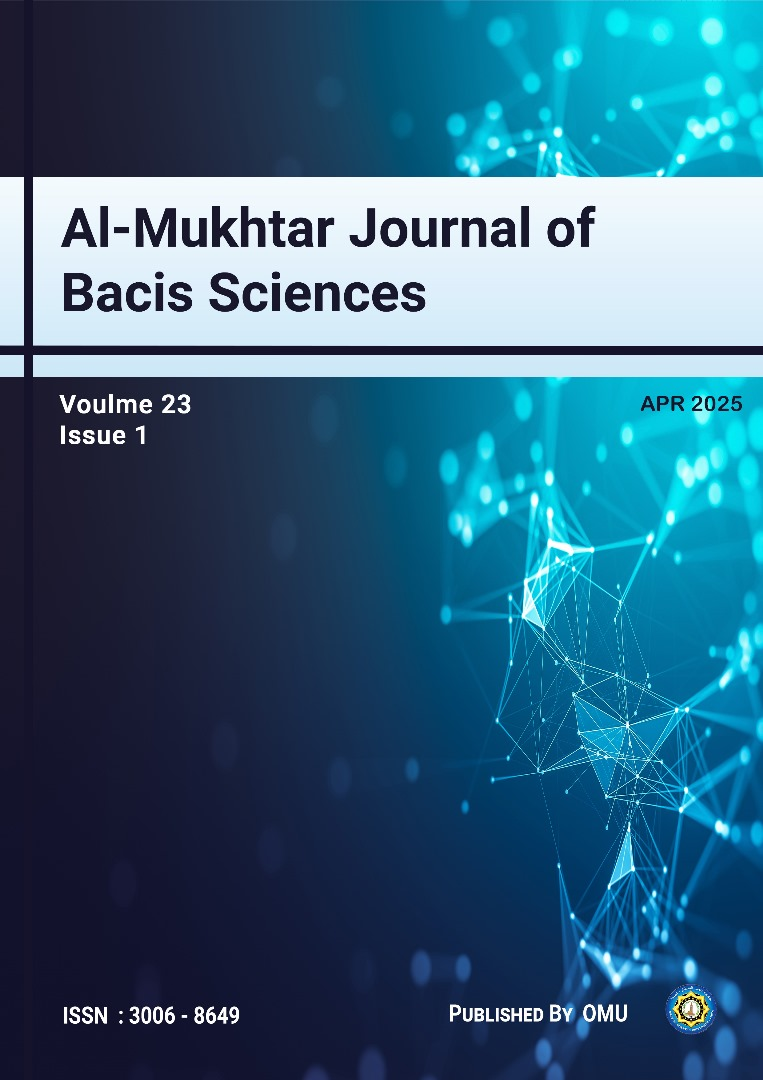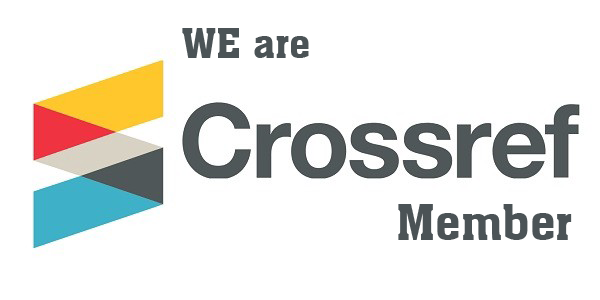Phytochemical and antioxidant Analysis of the five genus Mentha in AL-Jabal AL-Akhder – Libya
DOI:
https://doi.org/10.54172/kzzfqt07Keywords:
Antioxidant, Chemical Taxonomy , Mentha, PhytochemicalAbstract
In this study, significant differences were observed between the antioxidant values statistically analyzed by the standard curve obtained using different concentrations of the Prussian blue method to the extent that the five species can be divided into four groups and it confirmed by the statistical method used (standard deviation). The first group with the highest antioxidant value is M. pulegium followed by M.spicata, which occupied the second position (second group). The third group M .piperita, The last position with the lowest value was represented by M. aquatic and M .longifolia (the fourth group). Chemical tests for the presence of some secondary metabolites revealed that. The presence of Tannins, Sterols and Flavonoids in different amounts in the five species.M. aquatic and M. longifolia lack the presence of alkaloids, while there is a negative result for saponins in M. longifolia.
References
Alaila, A. K., Hamad, H., Ali, R. F., & Adress Hasan, H. M. (2017). Phytochemical screening of some herbal plants (Menthe, Origanum, and Salvia) growing at al-gabal al-akhder region-Libya. In-ternational Journal of Pharmacy & Life Sciences, 8(4).
Benabdallah, A., Boumendjel, M., Aissi, O., Rahmoune, C., Boussaid, M., & Messaoud, C. (2018). Chemical composition, antioxidant activity, and acetylcholinesterase inhibitory of wild Men-tha species from northeastern Algeria. South African Journal of Botany, 116, 131-139.
Bhat, S., Maheshwari, P., Kumar, S., & Kumar, A. (2002). Mentha species: in vitro regeneration and genetic transformation. Molecular Biology Today, 3(1), 11-23.
Hajlaoui, H., Trabelsi, N., Noumi, E., Snoussi, M., Fallah, H., Ksouri, R., & Bakhrouf, A. (2009). Bio-logical activities of the essential oils and methanol extract of tow cultivated mint species (Mentha longifolia and Mentha pulegium) used in the Tunisian folkloric medicine. World Journal of Microbiology and Biotechnology, 25, 2227-2238.
Harborne, J.B (1973). Phytochemical methods. A guide to modern techniques of plants analy-sis. Champman and Hall Press. London. University of Reading.
Kambouche, N., Merah, B., Derdour, A., Bellahouel, S., Bouayed, J., Dicko, A., & Soulimani, R. (2009). Hypoglycemic and antihyperglycemic effects of Anabasis articulata (Forssk) Moq (Chenopo-diaceae), an Algerian medicinal plant. African Journal of Biotechnology, 8(20).
Malkin, R. I. C. H. A. R. D., &Rabinowitz, J. C. (1967). Nonheme iron electron-transfer pro teins. Annual Review of Biochemistry, 36(1), 113-148.
Park, Y. J., Baek, S. A., Choi, Y., Kim, J. K., & Park, S. U. (2019). Metabolic profiling of nine Mentha species and prediction of their antioxidant properties using chemometrics. Molecules, 24(2), 258.
Rice-Evans, C., Miller, N., & Paganga, G. (1997). Antioxidant properties of phenolic com-pounds. Trends in plant science, 2(4), 152-159.
Sparg, S., Light, M. E., & Van Staden, J. (2004). Biological activities and distribution of plant sapo-nins. Journal of ethno pharmacology, 94(2-3), 219-243.
Wangensteen, H., Samuelsen, A. B., & Malterud, K. E. (2004). Antioxidant activity in extracts from coriander. Food chemistry, 88(2), 293-297.
Downloads
Published
Issue
Section
License
Copyright (c) 2025 Rania Farag (Author)

This work is licensed under a Creative Commons Attribution-NonCommercial 4.0 International License.
Copyright of the articles Published by Al-Mukhtar Journal of Basic Sciences (MJBS) is retained by the author(s), who grant MJBS a license to publish the article. Authors also grant any third party the right to use the article freely as long as its integrity is maintained and its original authors and cite MJSc as the original publisher. Also, they accept the article remains published by the MJBS website (except in the occasion of a retraction of the article).












